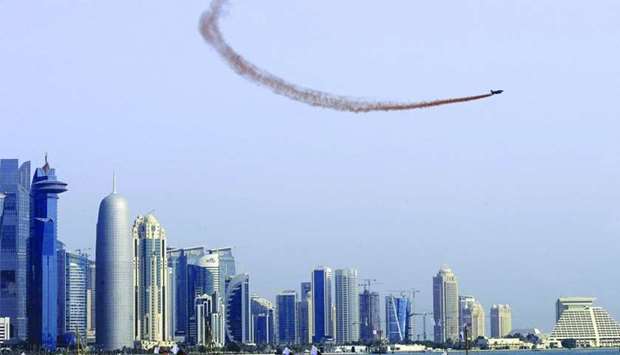Global credit rating agency Standard & Poor's (S&P) has affirmed "stable" rating on Qatar as the country's sovereign and external balance sheet offer sufficient buffer to withstand the twin stocks of Covid-19 and low energy prices.
Affirming "AA-/A-1+" foreign and local currency ratings on Qatar; S&P said it does not expect the government's fiscal and external stock positions to "materially" deteriorate beyond its expectations.
"We expect a timely policy response from the government in the context of continued liquidity challenges in the international capital markets," it said.
Despite the sharp decline in economic activity associated with the pandemic and low hydrocarbon prices, income levels in Qatar remain among the highest of rated sovereigns, supporting its strong credit profile.
High GDP (gross domestic product) per capita, rebounding to an average of $66,500 in 2021-23 from $55,700 in 2020 (not seen since 2006), would mitigate the effect of weak trend growth expected throughout the forecast horizon, it said, adding "we expect the rebound to be linked with an increase in hydrocarbon prices."
Projecting Qatar to continue generating surpluses in its budgetary accounts on the general government level from 2021, it said the country's strong general-government net asset position remains credit strength.
The sovereign's large liquid financial assets, averaging about 177% of GDP in 2021-23, provide it with a strong buffer during economic and financial shocks, S&P said.
Despite current account deficits through 2021, Qatar's external balance sheet remains strong, with liquid external assets continuing to offset the country's stock of external debt by a sizable margin.
"We expect the government will provide extraordinary liquidity support to the banking system, in case of sudden reversals in capital flows related to nonresident funding," it said.
Highlighting that the pandemic will also exert significant pressure on Qatar's growth by weakening domestic consumption and investment; S&P said the country derives about 50% of its GDP, 80% of government revenue, and more than 85% of exports from the hydrocarbon sector.
This makes the country's economy and credit profile "vulnerable" to sharp volatility in oil prices, to which most of its long-term gas contracts are linked, it said.
Foreseeing Qatar's government net asset position to remain at ratings strength over its forecast period; S&P expects the net asset position to average 106% of GDP over 2020-23.
In April this year, the government returned to the international bond markets with a three-tranche, $10bn Eurobond. A portion of the proceeds would be deployed for liability management, since the central government's debt principal repayments total about $14.1bn this year.
"We expect fiscal financing needs on the central government level will largely be met by debt issuances rather than drawings on assets. Although we expect government debt will increase in absolute terms over the coming years, we project that total debt will fall to about 73% of GDP through 2023," S&P said.
S&P estimates that interest payments on the government's debt would increase to about 8.5% of general government revenue in 2020, compared to 5.6% in 2019, and stabilise at about 7% through 2023.
The higher interest burden is associated with increased interest payment obligations on direct government debt and lower fiscal revenue over 2020-23, it said.


